When a business has multiple sales channels, the overall customer purchase frequency is 250% higher than in businesses that only have a single sales channel. Yet, a huge number of ecommerce businesses only concentrate on one sales channel for their business.
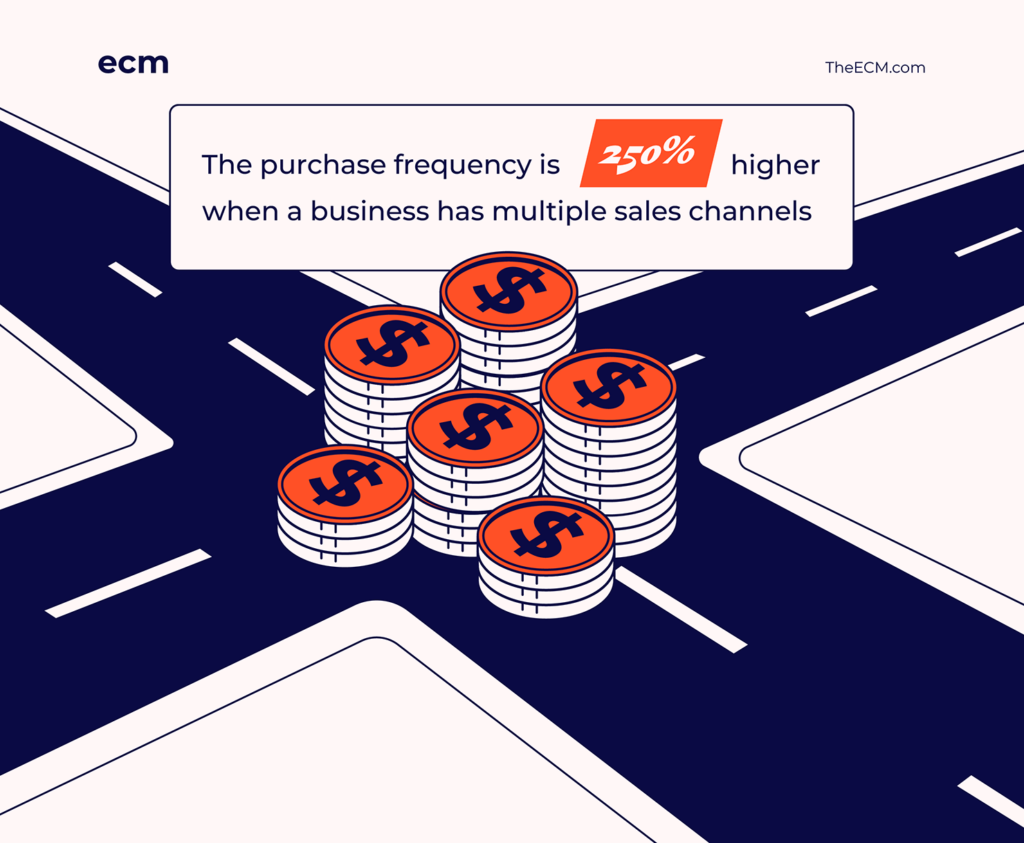
This is understandable, as small ecommerce start-ups only have a certain amount of attention they can give to any project.
When I started my business, I sold my products solely through Amazon. It was the best channel for my products, and I wanted to concentrate on becoming an expert in one area. It also allowed me to easily sell my products in the U.S., even though I am based in the UK.
This was a huge advantage for me, but it did leave me somewhat exposed. Selling on one channel by itself is great when you start out, but as you grow, you want to avoid being totally reliant on one channel.
Each channel only has a certain-sized audience. So, if you’re trying to grow your business, you need to diversify your sales channels to reach a bigger customer base.
There are many different channels to choose from, and each one has its benefits and drawbacks.
In this guide, I’ll take you through the top seven ecommerce sales channels, the pros and cons of each, and some guidance for how you can choose the right channel for your business.
I’ll cover:
What Are Ecommerce Sales Channels?
A sales channel is simply the method you use to get your products in front of your customers. This could be a physical store, a catalog company, a wholesale partner, or any other way to get customers to buy your products.
A digital sales channel is the method ecommerce businesses use to get their products in front of customers online. There are many different types of ecommerce sales channels, and as your business grows, these can become more complicated to manage even with the best inventory management system at your fingertips.
There are three main ways you can organize your ecommerce business sales channels. These are single, multi, and omnichannel.
- Single sales channel: A business uses one method to sell its products. A good example is an Amazon FBA Private Label business that simply sells on Amazon and doesn’t sell products anywhere else.
- Multichannel: When a business sells its products on multiple channels separately. An example is an ecommerce business that sells on multiple marketplaces, in stores, and on the brand’s ecommerce site. The channels aren’t integrated in any way, but they all contribute to exposure and sales for the brand.
- Omnichannel: An omnichannel model is an extended version of multichannel selling, where all the different channels are connected to make an integrated experience for the customer. The customer should be able to have the same experience no matter where they’re shopping, and core business functions such as inventory management and order management are all connected via any omnichannel commerce platform.
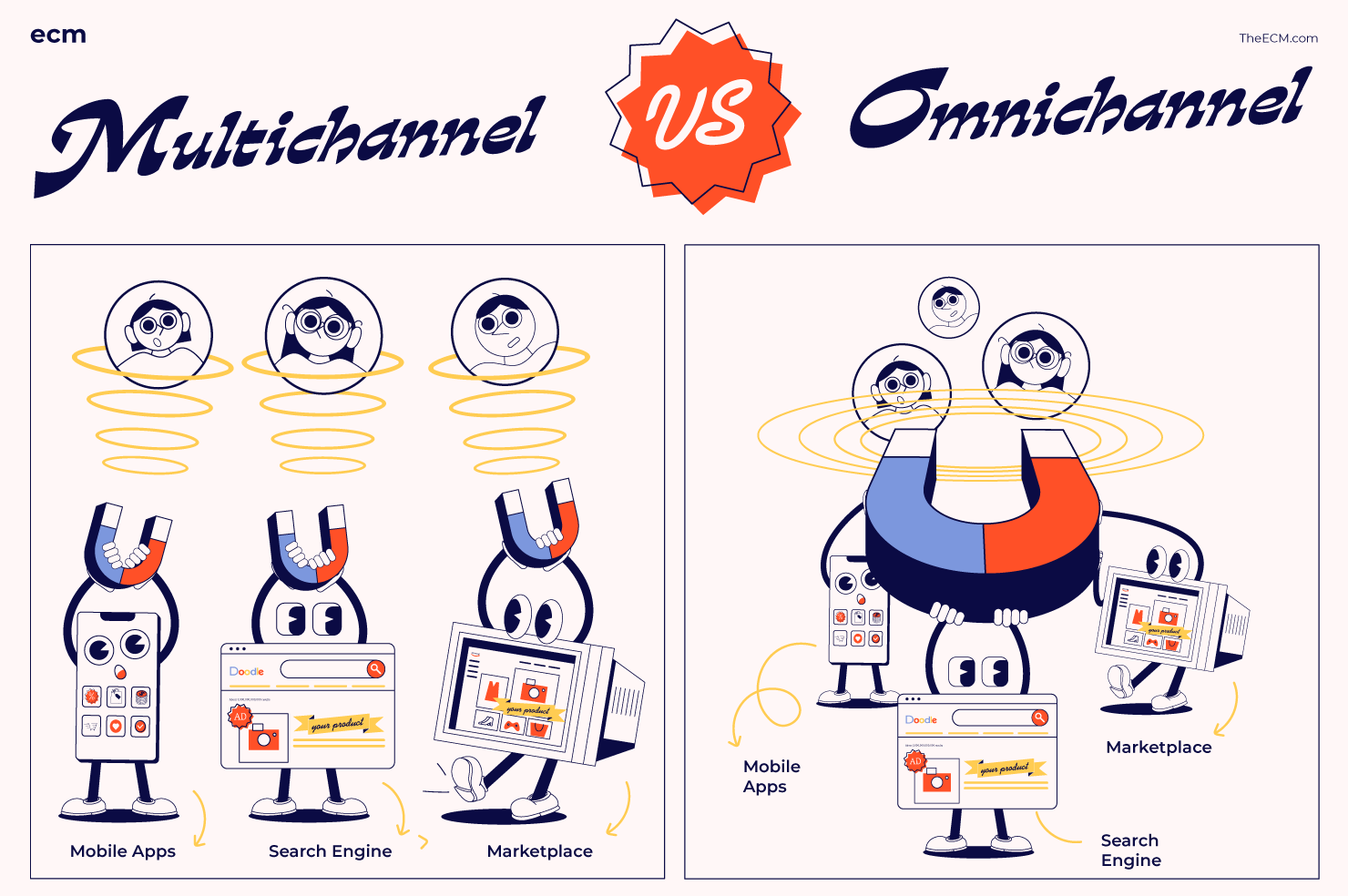
Omnichannel is the most advanced strategy for organizing your sales channels. In reality, most businesses use a combination of both multi and omnichannel. The reason for this is that some channels are easier to integrate into a system than others.
This doesn’t mean you shouldn’t consider using them. For example, Etsy doesn’t do a good job of allowing any external software to track customer orders, but if you’re selling handmade products, it’ll likely be a great sales channel for you.
The Benefits Of Multiple Sales Channels
In this guide, we’re going to look at some different sales channels and the benefits of each one, but there are some general benefits to using more than one channel.
Make more sales
The main benefit of selling your products on more than one channel is you have more chances to make sales.
This is especially true with brands targeting younger shoppers, who are much more likely to move to different locations and shop in different places using multiple devices.
Broaden your reach
As well as having more chances to make sales, you also have a chance to broaden your audience and improve the reach of your brand. By choosing new sales channels, you are more likely to find customers in different demographics.
Some customers love using a particular channel and keep coming back to it. A great example of this is Amazon. They have a 90% customer retention rate, and customers who are Prime members are likely to use Amazon as their main online shopping channel.
Cheaper to expand your business online
Opening new stores in other countries can be expensive. By using online sales channels such as marketplaces, you can reach new customers without having to open new brick-and-mortar stores and without having a big expensive marketing push to get new customers. You can even leverage no- or low-cost software, like free inventory management software, to keep costs down.
The Best Ecommerce Sales Channels
There are many different types of ecommerce sales channels, and it is important to choose the right ones to use as you only have limited time and resources at first. As you get bigger, you might want to consider using multiple channels to really grow your brand.
Ecommerce website
Having your own website is the most important sales channel, but often it’s not the best way to start an ecommerce business.
The reason for this is getting traffic can be expensive and time-consuming. When I started my business, I spent a few thousand dollars on building a really nice and unique website, but I didn’t spend any time learning how to acquire traffic, which is the hard part.
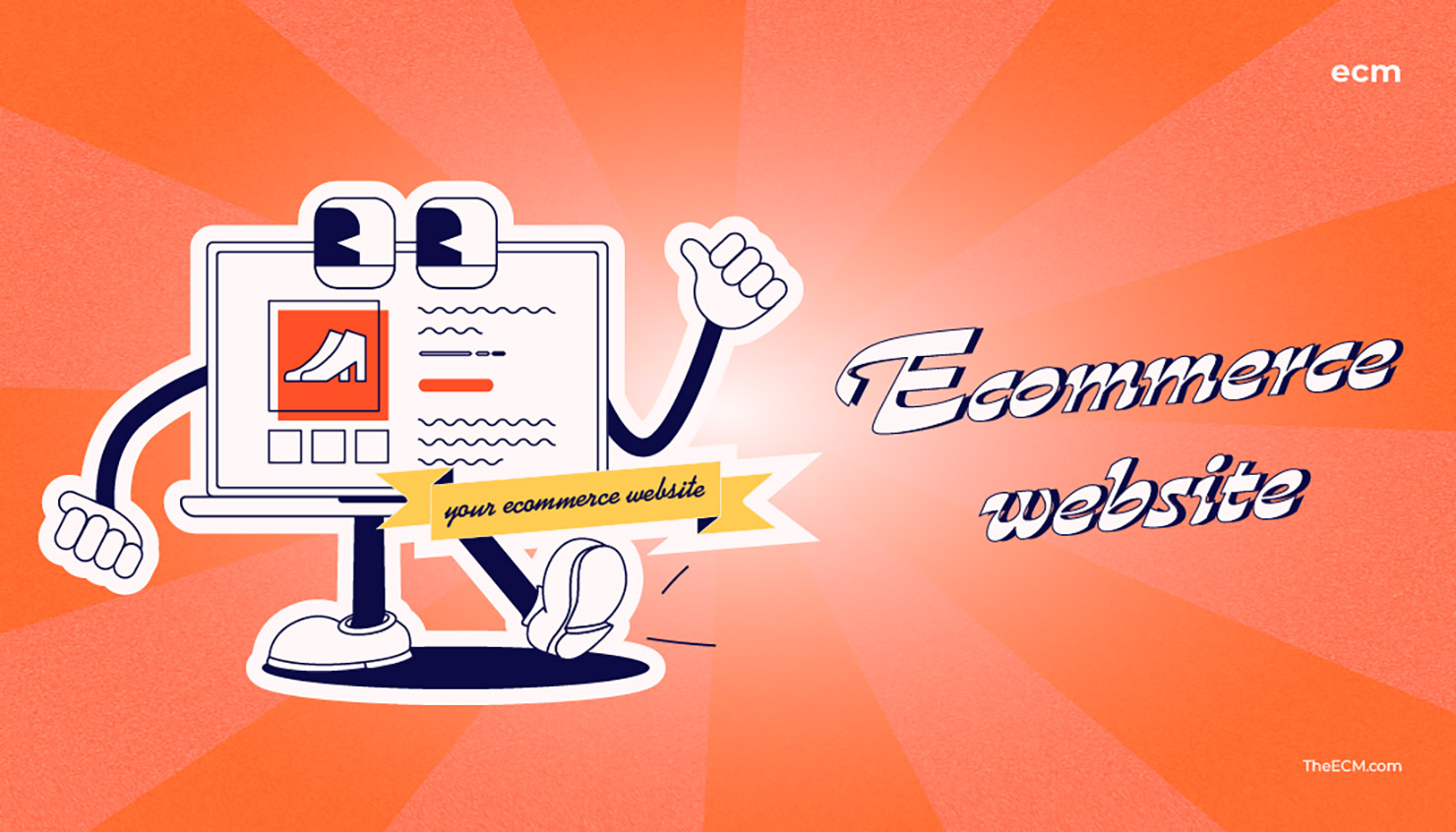
However, if you already have a recognizable brand, having a good website is super important as you own your customers. With nearly every other sales channel, the platform or marketplace owns the customer data, so selling online becomes very transactional. The marketplace sells your goods, and you get money.
When you own your own traffic, you can build a customer base, which means you have a whole list of customers as a target market to launch products, and from which you can create a loyal fanbase that loves your brand. This type of selling is often called direct-to-consumer (or DTC), as you are selling products directly to your customers.
Business-to-business (or B2B ecommerce) is selling directly to other businesses, and this can also be done through your website. The great thing about B2B ecommerce sales is businesses often make repeat purchases, which means you can create a long-term customer.
Pros of selling through your website:
- You can create a website that shows off your brand.
- You own the customers.
- You don’t have to pay fees.
Cons of selling through your website:
- You need to get traffic to your site.
- You can’t use the wide customer base of other platforms.
- You need to manage all the order management processes yourself.
Marketplace
An ecommerce marketplace is a platform where ecommerce business owners can sell their products. Think of it as an online version of a market, but instead of a nice stall displaying your goods, you have listings and store pages to display your products.
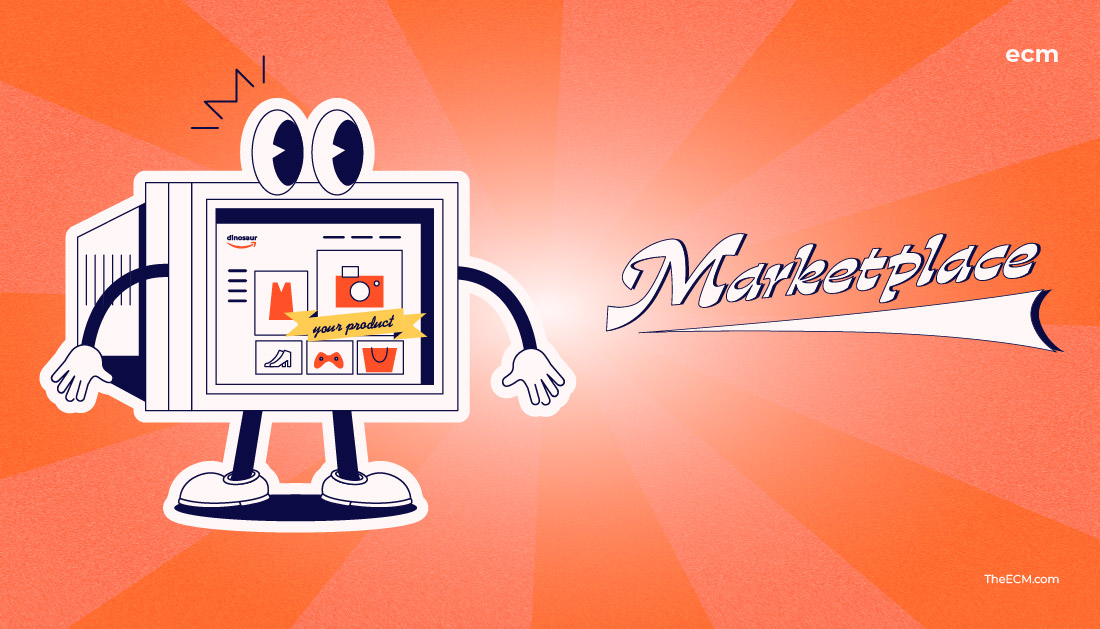
Marketplaces have a huge range of products for sale, and there are different types of marketplaces for different types of businesses.
One of the main benefits of using a marketplace is you get access to its customers. They usually have a huge customer base, which means it's much easier to start an online business on a marketplace than your own website.
The main drawback to using them is that the marketplace owns the customer, so it's not as easy to build a customer fan base.
The other negative is you need to pay commission fees to the marketplace for selling your products. The fees range from 5-25% of the sales price, so it is important you factor these fees into your profitability calculations.
When I started my ecommerce business, I started selling online on Amazon, then Etsy, then on my own website, and through wholesale. It is much easier and faster to get started on an online marketplace, as they already have the customers and the platform to build your online store.
There are a huge number of different marketplaces for every niche imaginable, but some of the most important ones for ecommerce business owners are:
- Amazon: This is the world's largest marketplace, operating in 19 countries but also shipping orders to many more. Amazon is a general marketplace where you can sell nearly any type of product. They have a huge customer base of over 350 million members, so there are plenty of opportunities to make lots of sales and build a big business.
- eBay: One of the largest marketplaces in the world, eBay has traditionally been used as an auction site for normal people to sell unwanted products. However, it has now grown into a huge market for ecommerce businesses, and, like Amazon, it is a general marketplace so that you can sell nearly any product.
- Etsy: Etsy is a marketplace for selling handmade, vintage, and craft items. All the products on Etsy are handmade or hand designed. If you sell pretty items in the homeware or decorative categories, then it could be a great market for you.
- Walmart: Walmart is the biggest company in the world, and they are attracting sellers from countries outside of the U.S. One of the main benefits of selling at Walmart is you might get the option to sell your products in their store, which could be a huge opportunity.
- Other marketplaces: There are too many different marketplaces to name them all, but some interesting ones are Wayfair, Not on the High St, and Feel Unique. Some of these are dropshipping platforms that take a commission when a sale is made.
Selling on marketplaces like this can be competitive, as your products sit alongside lots of other similar products, so customers get a large choice. However, they have massive customer bases, so there is plenty of room for you to sell your products.
Social media
Social media isn’t just a place to find hilarious cat videos or share pictures from your friend’s wedding. It is also a perfect platform for selling products.
Instagram, TikTok, Facebook, and Pinterest are the biggest platforms for selling, and the best thing about selling products on a social media platform is you can showcase really lovely pictures and videos of your products in action, so potential customers can start to visualize themselves using the products.

You can even add a buy button to your posts, which means people who are bored and checking out their social media feeds can buy your products directly from the platforms without even entering their credit card details.
Pros:
- Selling on social media doesn’t have fees like a marketplace.
- You get some analytics from the platform to measure your performance.
- You can build a large following to start selling more of your products.
- You can create a community feel around your brand.
Cons:
- It can be time-consuming to create new posts and stay relevant.
- Social media PPC ads can be expensive.
- You need to keep posting in order to keep your products at the top of social media feeds.
Related read: How To Use Social Media For Ecommerce: An Easy Guide
Wholesale
Wholesale is when you sell your products in bulk to another business, which then sells them for a profit. A huge benefit of wholesale is that your products can then appear in retail stores, giving your brand a chance to get in front of a huge amount of new customers.
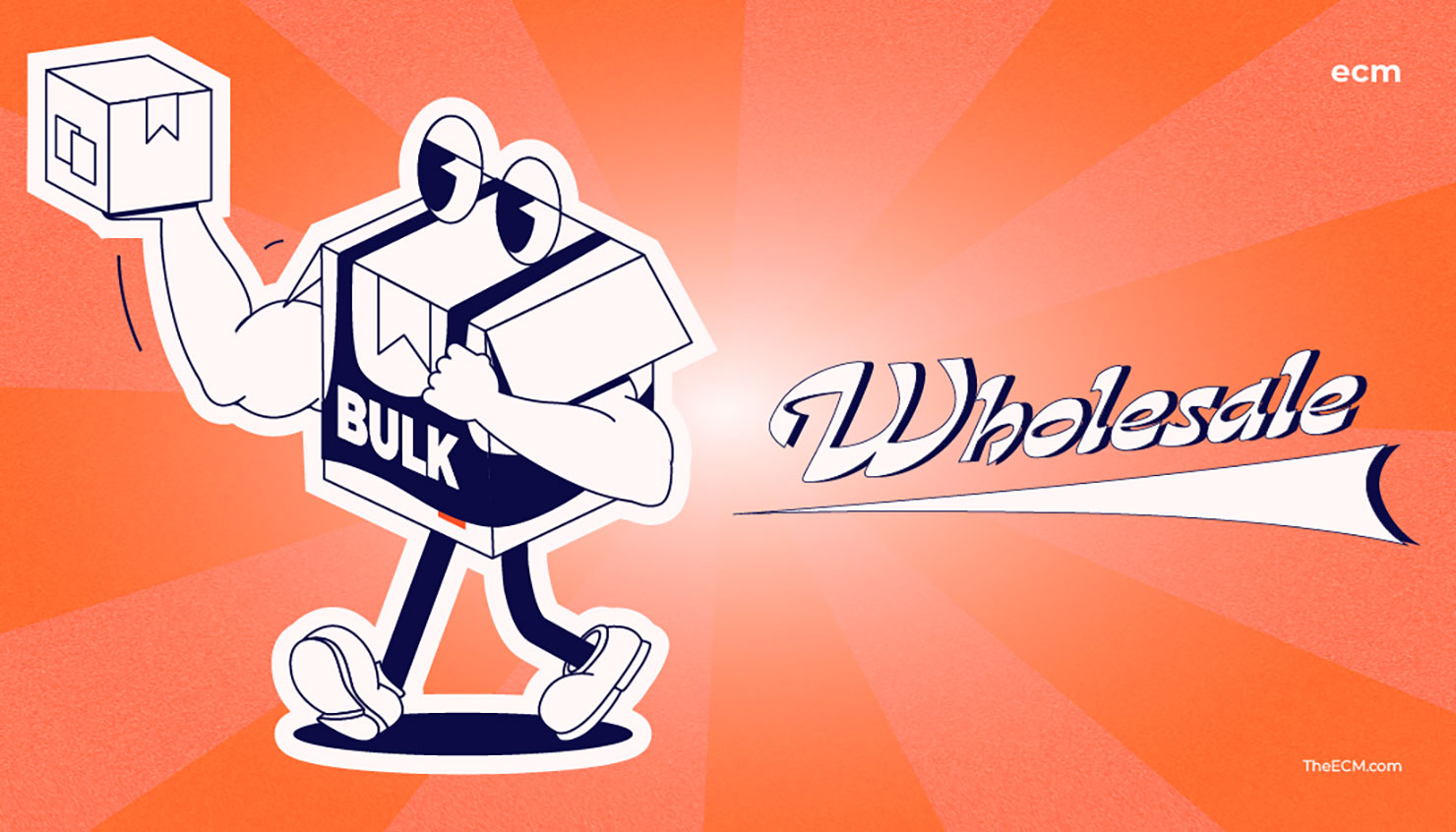
Wholesalers are usually larger companies who expect to sell a large number of products, which is a great opportunity for you to sell your products in large quantities.
Traditionally, wholesalers would only work with brands that could make a large number of products. However, new wholesalers have come into the market, such as Faire and Ankor Store, which sell smaller amounts of wholesale products to independent retail stores.
Pros:
- You can sell a huge amount of products.
- Your products can reach a new and larger audience.
- Selling products in retail stores gives your brand good credibility.
Cons:
- You need to be able to produce a large number of units.
- You give away some profit margin.
- You don’t own the customer.
Search engines and PPC
Google Ads and Google Shopping have become one of the most important sales channels for ecommerce brands, as over 46% of product searches start on Google.
It’s hard to rank your products organically on Google, as you’ll be competing with huge brands, which is why you need a PPC strategy to ensure customers see your products.

You can get thousands of views for your products using Google Shopping, and a lot of businesses use it as their main sales channel. It also allows customers to buy products directly from Google, which makes it a really easy customer experience.
The main downside to Google Ads and Google Shopping is you need to pay to appear. So make sure your keyword research is correct to avoid spending money on unnecessary searches.
Pros:
- You can get thousands of customers.
- Your products appear in search results, directing customers to your website. This gives you a good opportunity for cross-selling.
- You will own the customer data.
- Demand side platforms can help manage and optimize PPC spend.
Cons:
- PPC can be expensive and time-consuming if you don’t have a good strategy.
Partnerships and influencers
Partnerships with influencers can bring a new audience to your brand; they’re a big part of digital marketing strategies.
Influencers often have fans following them who buy a lot of the products that they advertise. When you pick influencers correctly, their audience of fans should align with your target audience.
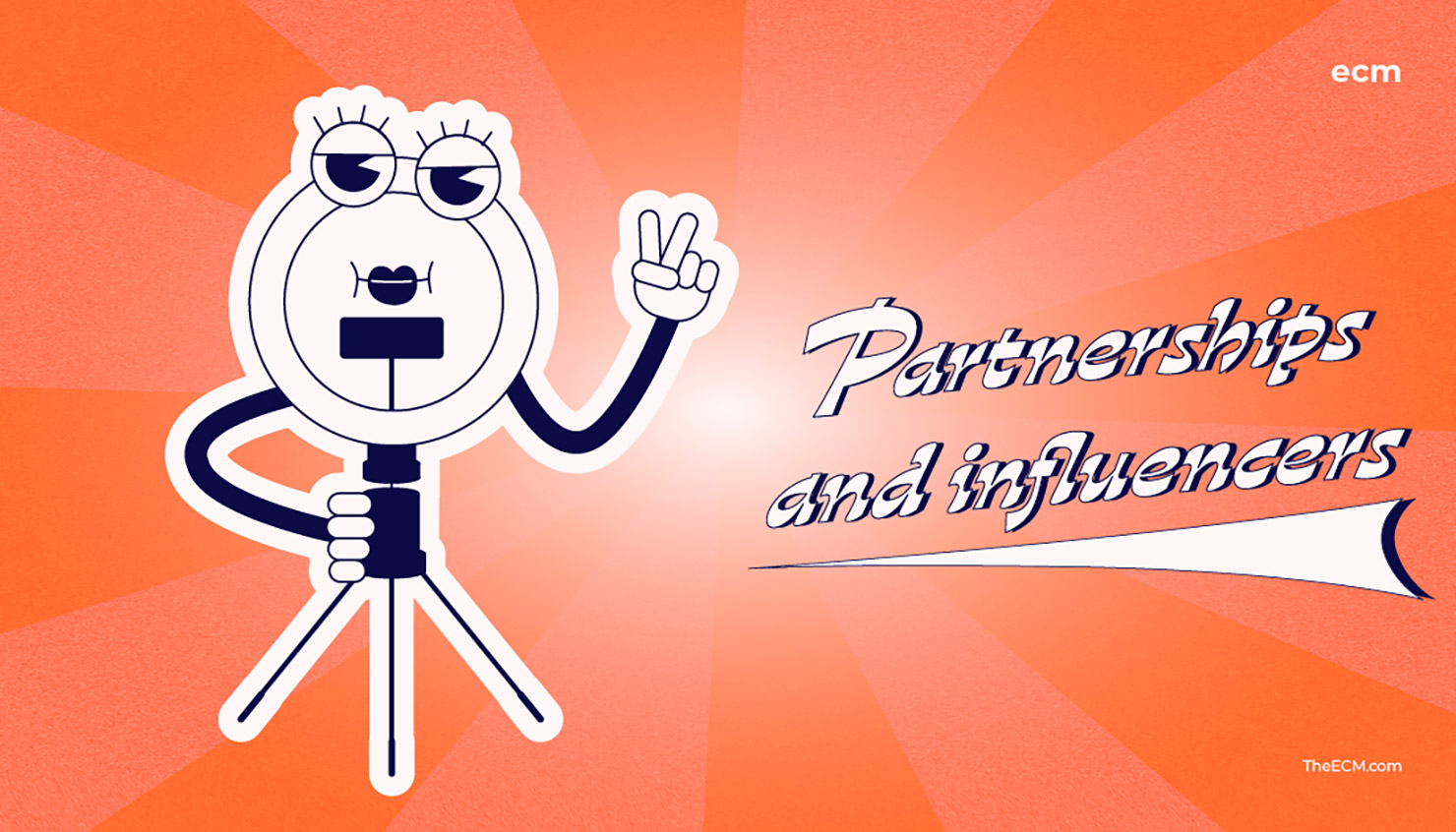
Some brands have used influencer marketing to drive sales, improve ad performance or even grow the brand’s own social media following. Generally, an influencer will get a discount, free products, or payment to promote your products. Influencers can be expensive, so it is really important to choose one that has an audience you want to tap into.
There are influencer marketing agencies that specialize in managing influencers and matching them with great brands. If you want to go it alone, I’d suggest looking into influencer marketing software.
Pros:
- You can use an existing audience.
- It can be cheaper than advertising.
- Influencers are well-trusted by their audience.
Cons:
- You need to make sure the content the influencer makes is in line with your brand.
- It can be costly to get a good influencer.
Related read: Why Ecommerce Influencer Marketing Is A Must-Have Strategy For Your Business
Shopping apps and mobile devices
Mobile shopping accounts for nearly 45% of online sales, which means mobile shopping is not something you can ignore. Apps like Wish, Shop by Shopify, and Sephora are marketplaces specifically targeted at mobile shoppers. Other marketplaces, such as Amazon, also have dedicated mobile apps.
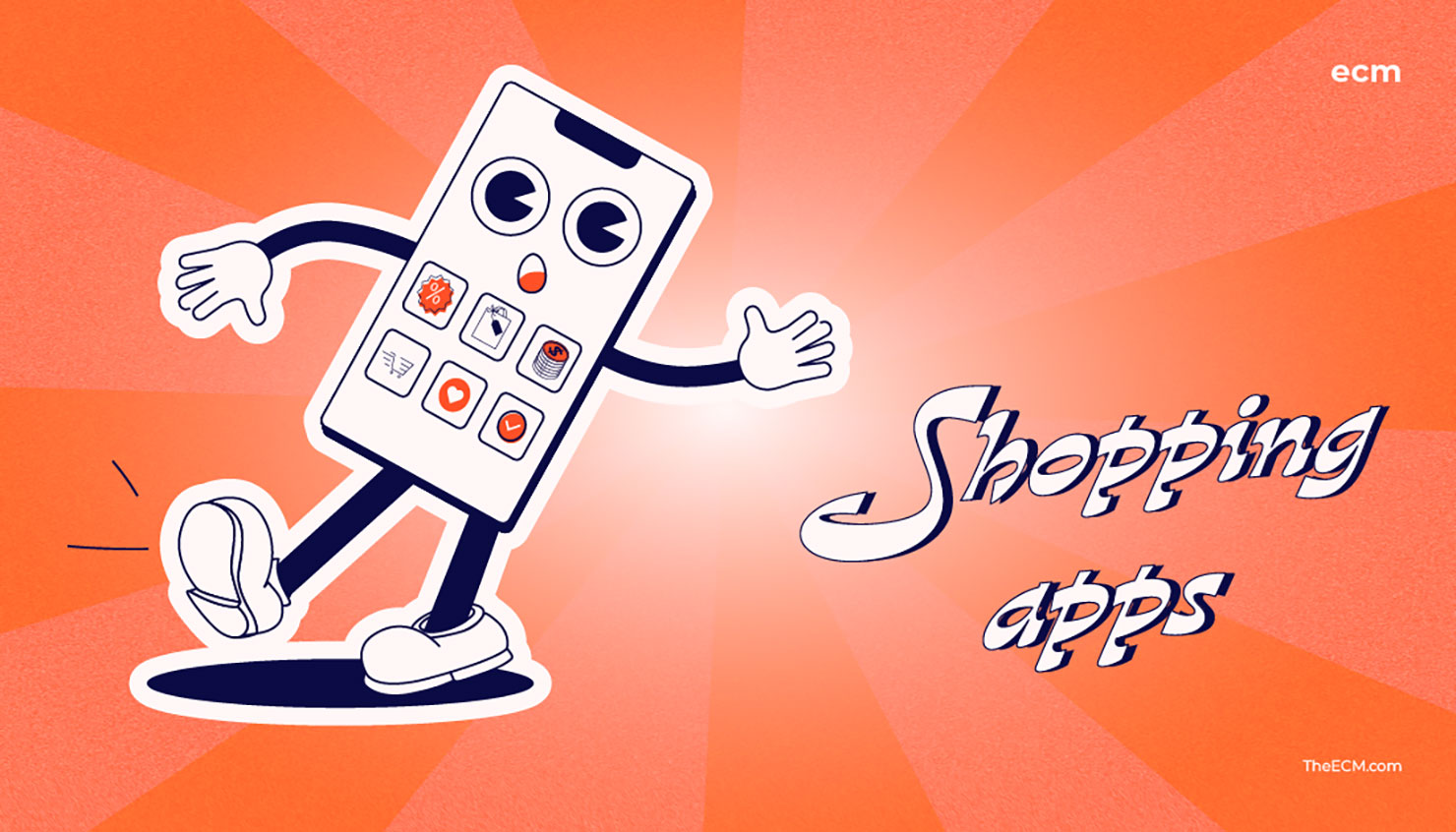
When targeting online shoppers, it’s important that you make sure your listings and images are optimized for mobile devices. Even if you only sell through your own DTC website, it’s important to make sure your website is responsive so it works great on phones (Google also take this into account when they rank a website in search results).
Pros:
- Shopping apps don’t always have lots of brands for sale, which means you can stand out from the crowd.
- The percentage of mobile shoppers is growing all the time, so there is a growing audience.
Cons:
- It is important to make sure you choose great app marketplaces and don’t sell on platforms that don’t align with your brand.
How To Choose The Right Sales Channel For Your Business
Different sales channels are more suitable for some businesses than others. There are a few factors you need to consider when deciding which sales channel to concentrate on because you only have a limited amount of resources.
Who is your target audience?
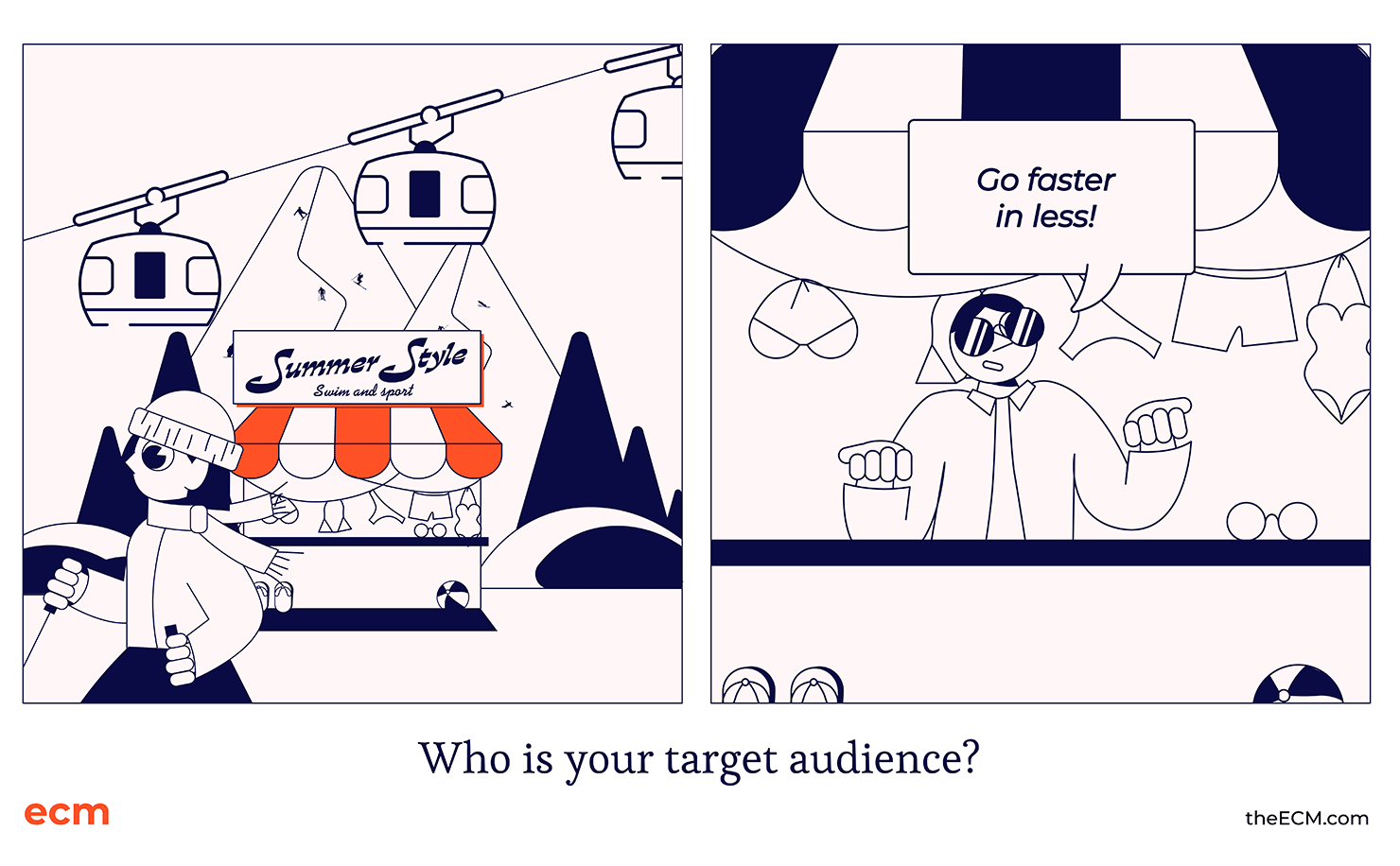
Etsy is a perfect channel if you sell handmade products, but it's not good if you sell electronics. Feel Unique is great for new beauty brands which want to get exposure to a large audience. Understanding your target audience will help you choose the channel that fits your brand identity (here’s a guide from Hubspot to help).
What is your competition doing?
Look around at your competition and see where they’re selling their products. If your competition is selling in retail stores, then you might want to consider selling wholesale.
If they’re having success on marketplaces, there are some tools, such as Helium 10 and Jungle Scout you can use to see how many sales they’re making. If your competition’s products are selling well, there is a good chance your products will sell well too.
MORE ARTICLES
- What Is Reverse Logistics In Supply Chain Management? Best Practices & How-To Tips
- What Is An Ecommerce Competitive Analysis & How To Conduct (Free Template)
- Ecommerce Returns Best Practices: How To Handle & Solutions (Guide)
How much time and resources do you have for growth?
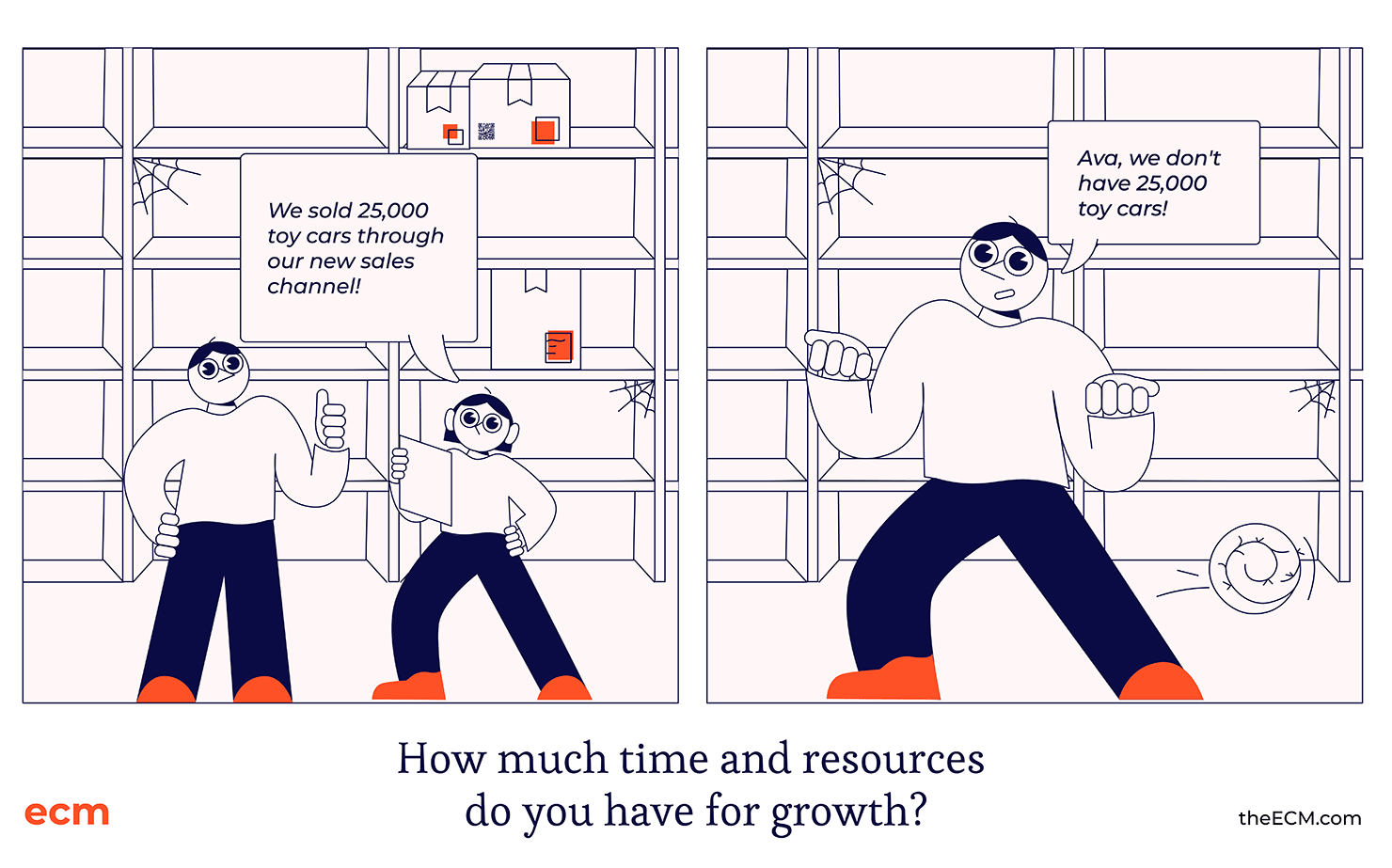
Scaling a business takes a lot of time and resources, so you need to ensure you’re concentrating on the strategies that will be most effective for growing your business. You also need to ensure you have enough stock to fulfill all the orders and the capacity in your warehouse to make sure the stock gets to the customers.
What is your multichannel ecommerce strategy?
When your business starts to grow, you will have more platforms to manage. This will mean more customer service inquiries, more orders to fulfill, and more analytics to understand. Having an order management system will simplify this massively.
Choosing the Right Ecommerce Sales Channels Is Key
There are lots of different types of sales channels you can use for your ecommerce brand, and choosing which one will work for your business is a big decision. It’s important you don’t overstretch yourself at first, as each channel has different costs and learning barriers you need to understand.
When I first started my brand, I sold solely on Amazon using FBA, but I expanded as my business started making more money.
If you're already an established business, consider getting help from an agency or expert so you don’t make any expensive mistakes.
Once you get your business selling on multiple channels and you start getting different types of customers, you’ll start to see your brand grow exponentially.
Make sure your business is ready for growth!
More great ECM content:
